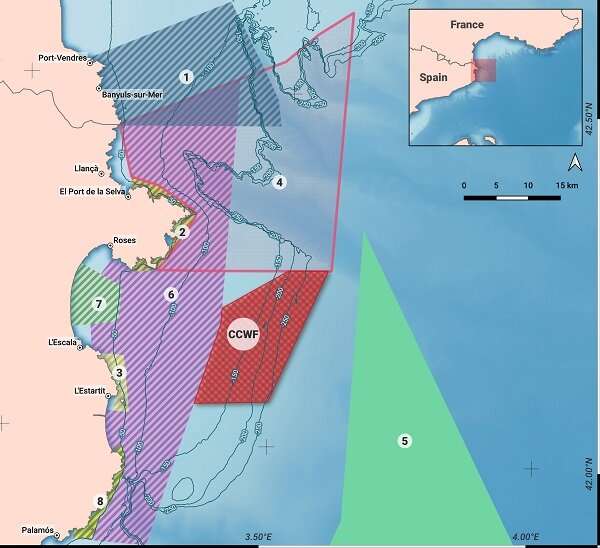
A scientific team recommends excluding and moving offshore wind farms from the protected areas in the Mediterranean due to the serious negative impacts these facilities can cause on the marine biodiversity and the landscape.
The team reviewed nearly 150 papers. This diagnosis aims to be useful in other Mediterranean areas and other seas and oceans of the world that feature a high diversity, the existence of protected marine areas, a valuable landscape, and important fishing and tourist activities at a local scale.
The Read article highlights that the large-scale offshore wind farms can entail “serious environmental risks to the seafloors and the biodiversity of many areas in the Mediterranean”:
- Under the water, floating wind farms—those that would be set up in the Mediterranean—require huge mooring and anchorage systems that can affect the integrity of the seafloors.
- Marine mammals can collide or can get tangled up in the wires.
- The noise caused by the wind farms accumulates with other sounds from human activities—such as sailing—and it has a negative impact on the behaviour of marine mammals.
- Floating platforms attract invasive species or opportunist species that can alter the fragile balance of the biodiversity.
- Floating wind turbines—which are more than 250 meters high—can alter the dynamics of the local atmospheric and oceanic currents. This situation can affect the production of plankton in a sea that is usually low in nutrients.
- Ecosystems with a higher biodiversity are the most resistant to the impacts of climate change, and marine habitats have a great carbon storage potential.
- Impacts will reach inland to coastal towns. These towns will have to house infrastructures (access roads, substations, transmission lines or temporary structures) that can damage fragile ecosystems such as wetlands, for example.
- Exclusion of fishing activity—including artisanal fishing—of the affected areas by the offshore wind farms can have economic, social and environmental consequences for the fishermen, the fishing industry, the coastal communities that depend on this sector, and society in general.
- Sounds, vibration, and the electromagnetic fields of the cables can be detrimental for fishing captures.
Debate on the potential impacts of the marine wind farms on the landscape will become more intense in the Mediterranean than in the Northern countries, and it has to do with the relevance of the coastal and maritime tourism of this sea. For instance, the wind farm projected in Cap de Creus would be built 8–30km (5–19miles) from the coast, while in 2019, the average distance of all the marine wind farms in Europe was nearly 60km (37miles) from the coast.